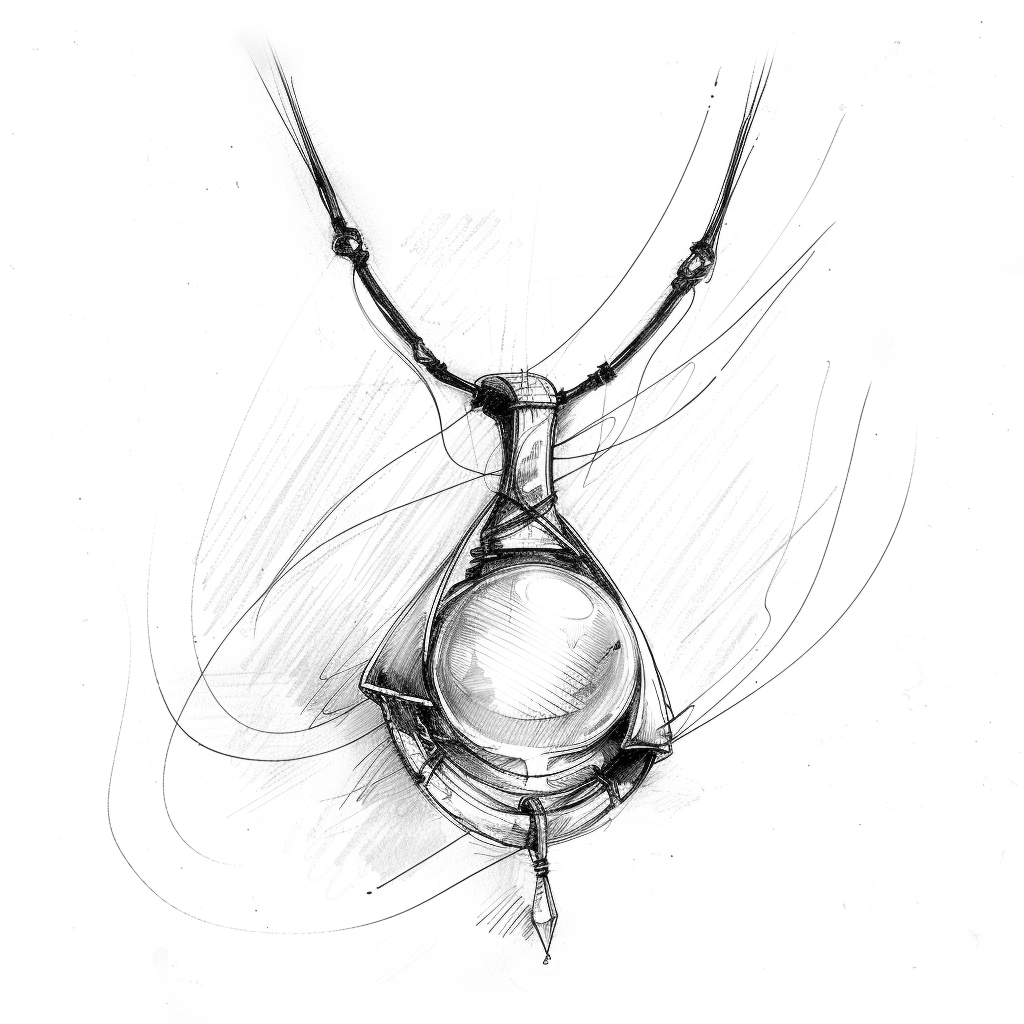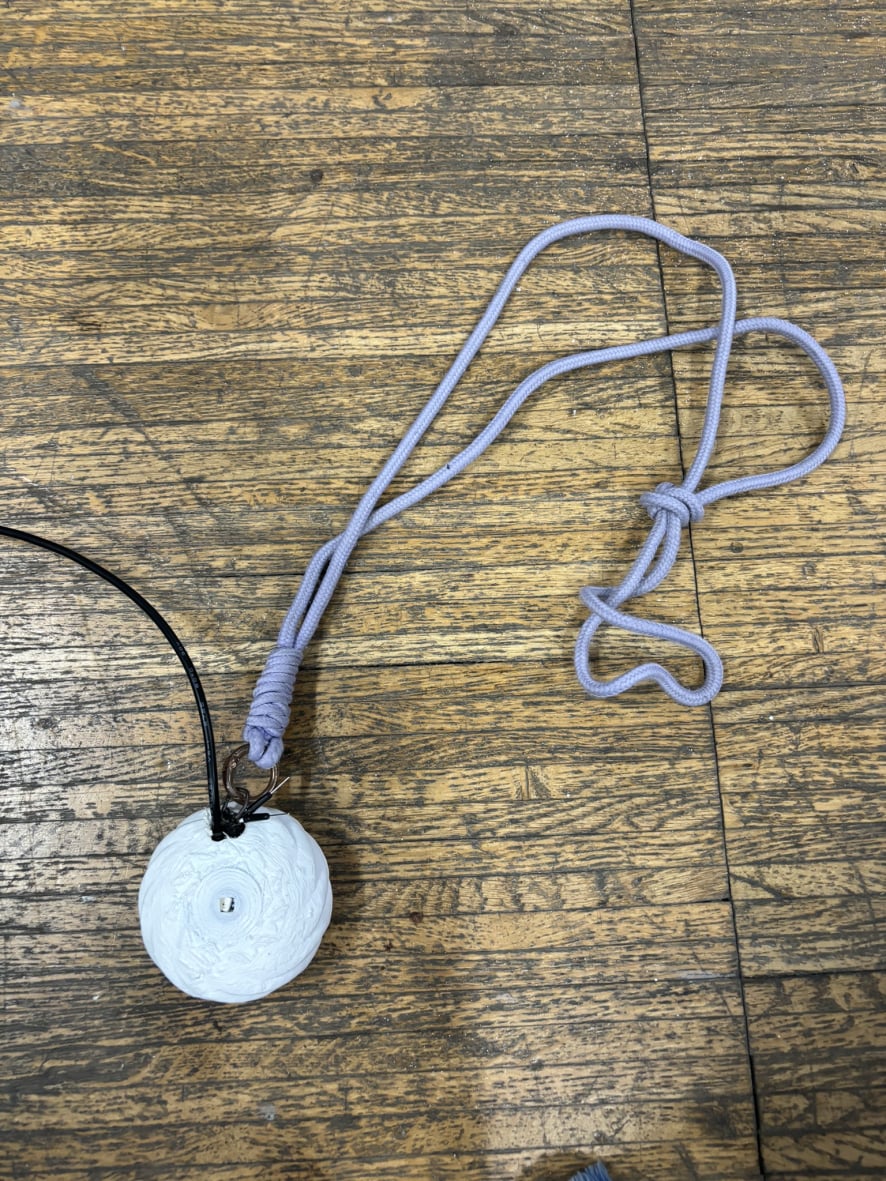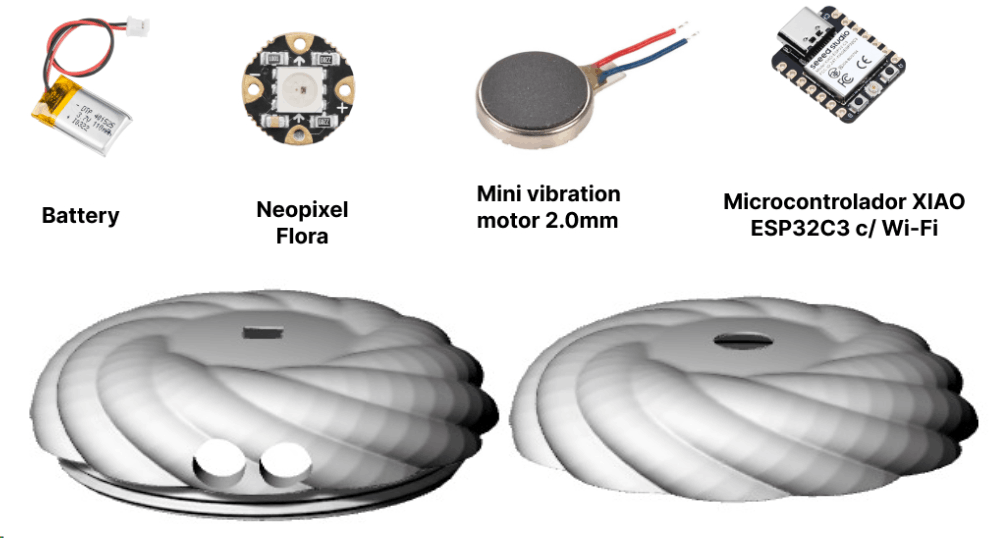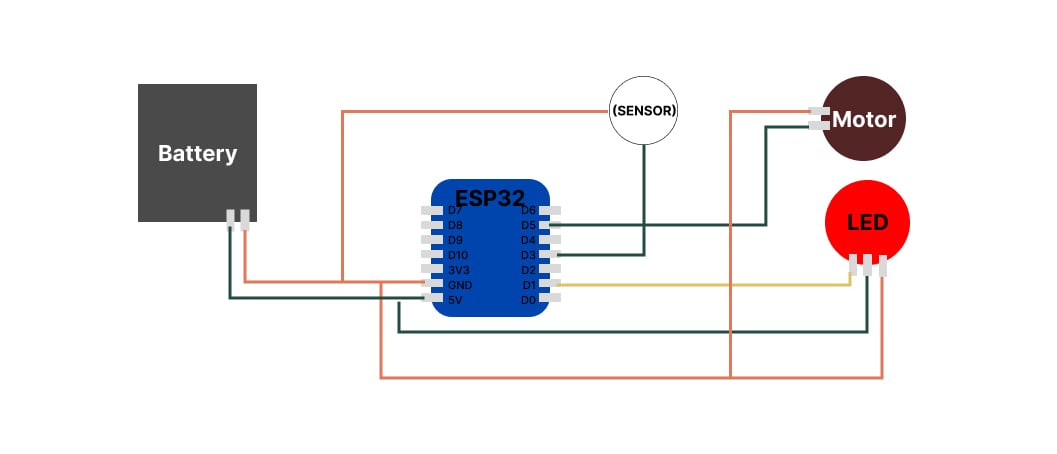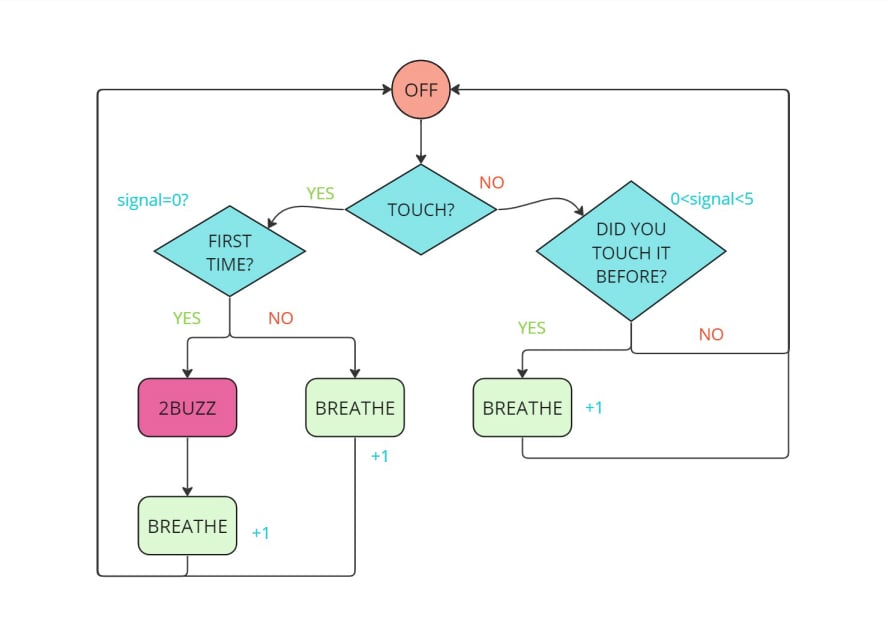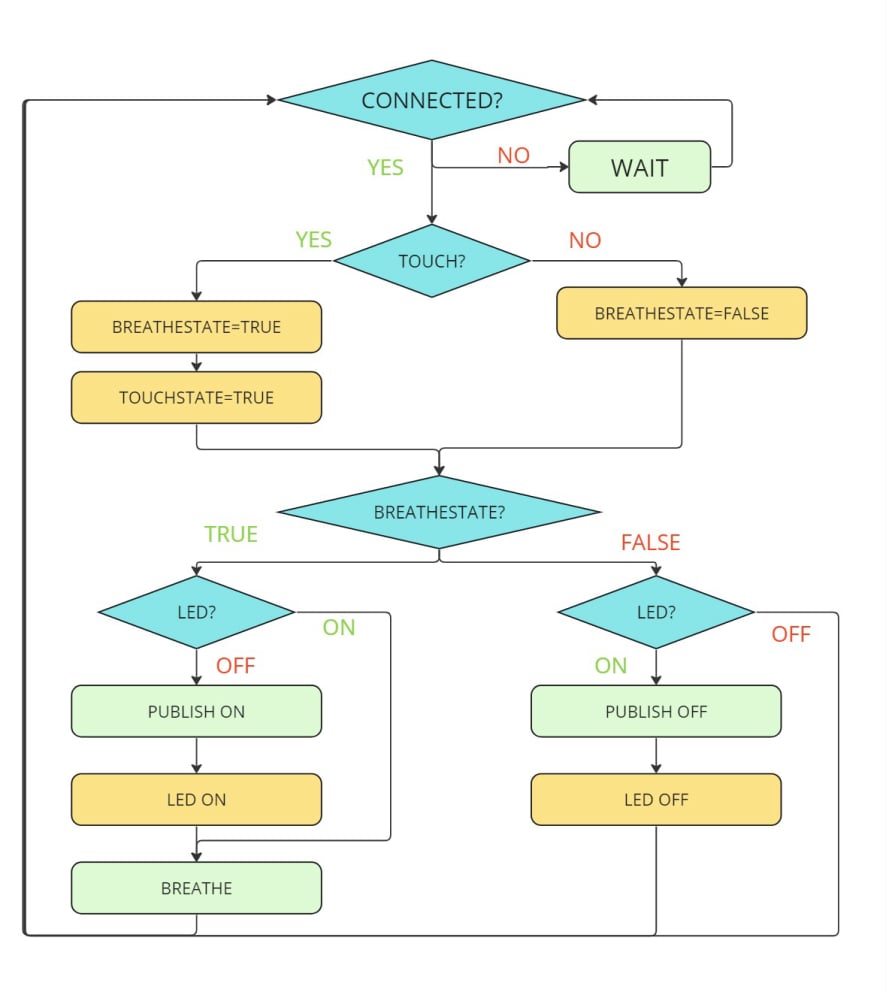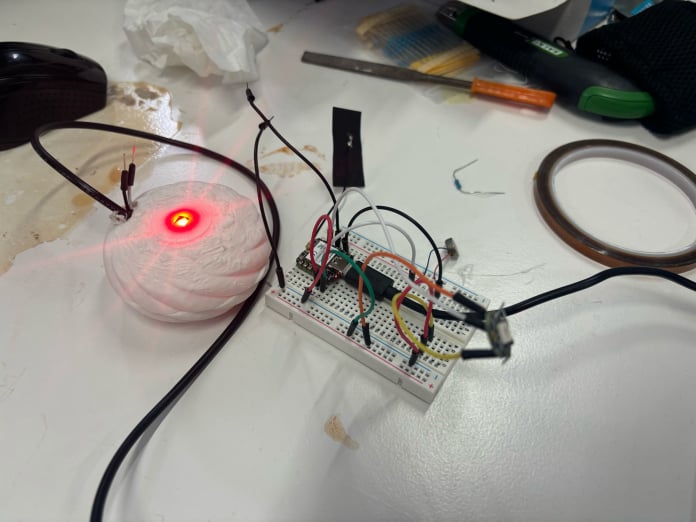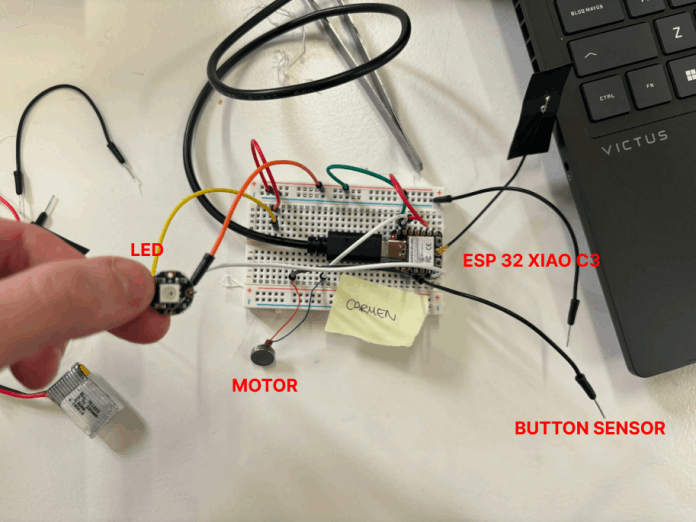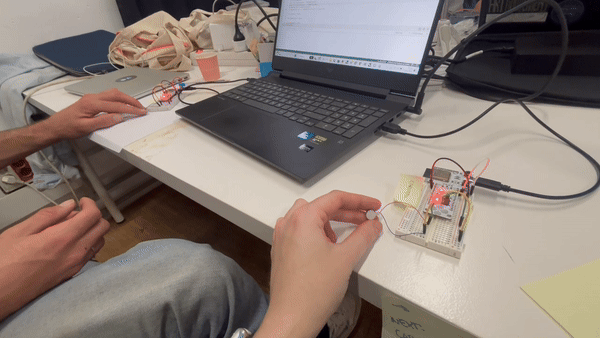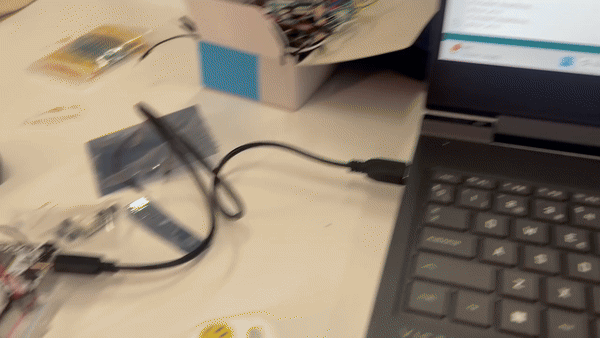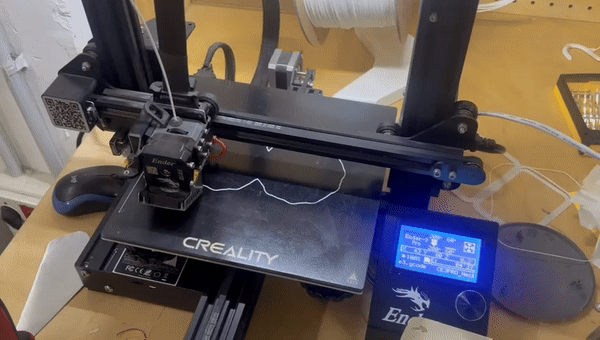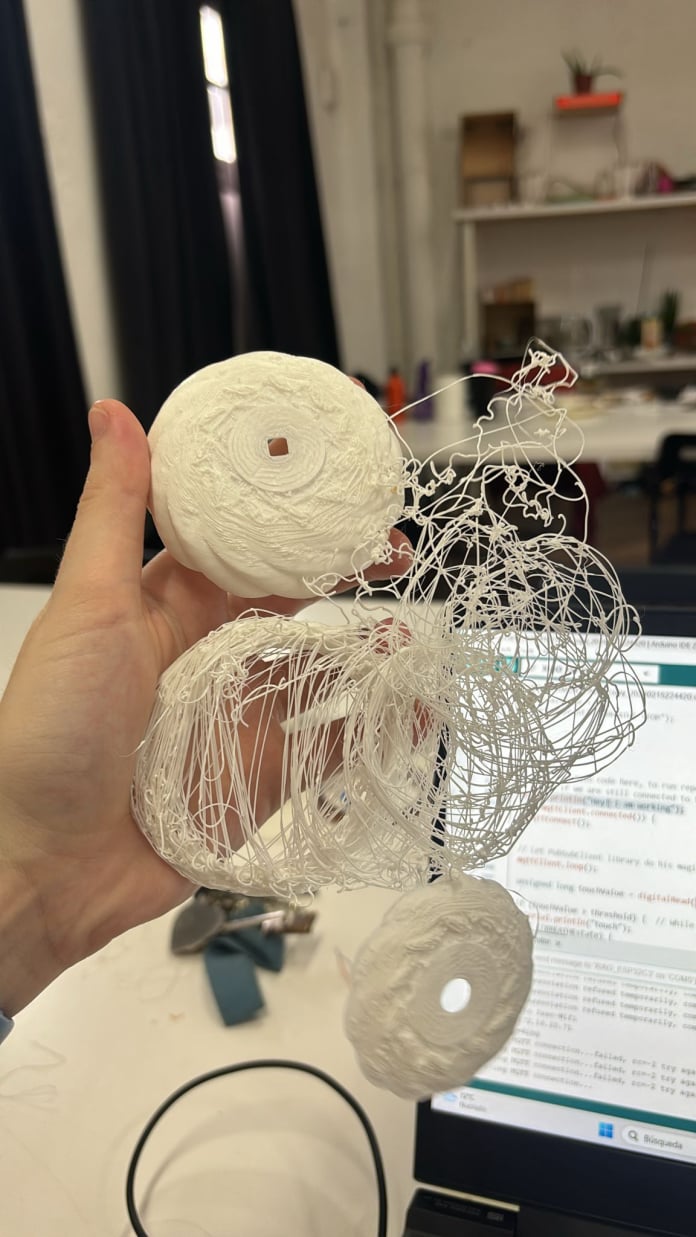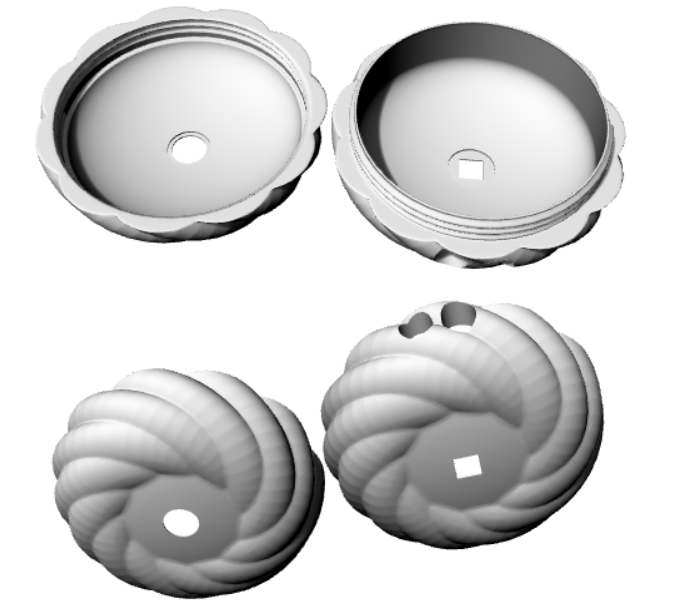Idea
We decided to create a wearable device that would sense your anxiety and help you follow breathing exercises guided by vibrations to calm down. As anxiety is often an irrational feeling, it is hard to communicate to others. What is more, most people are not even conscious of the fact that they are anxious. This is why we decided to make this device collaborative: when it senses that you're anxious, the device sends a signal to a paired device (a partner, a friend etc.), which helps them understand how you're feeling and act accordingly, without needing any communication from your side.
